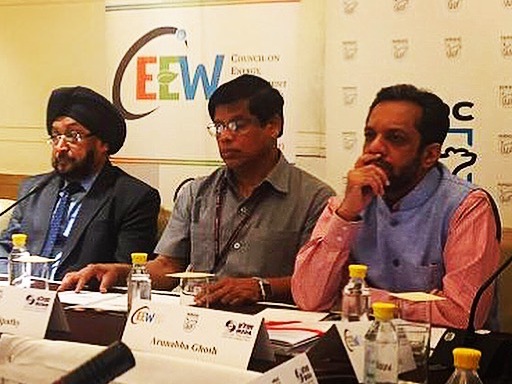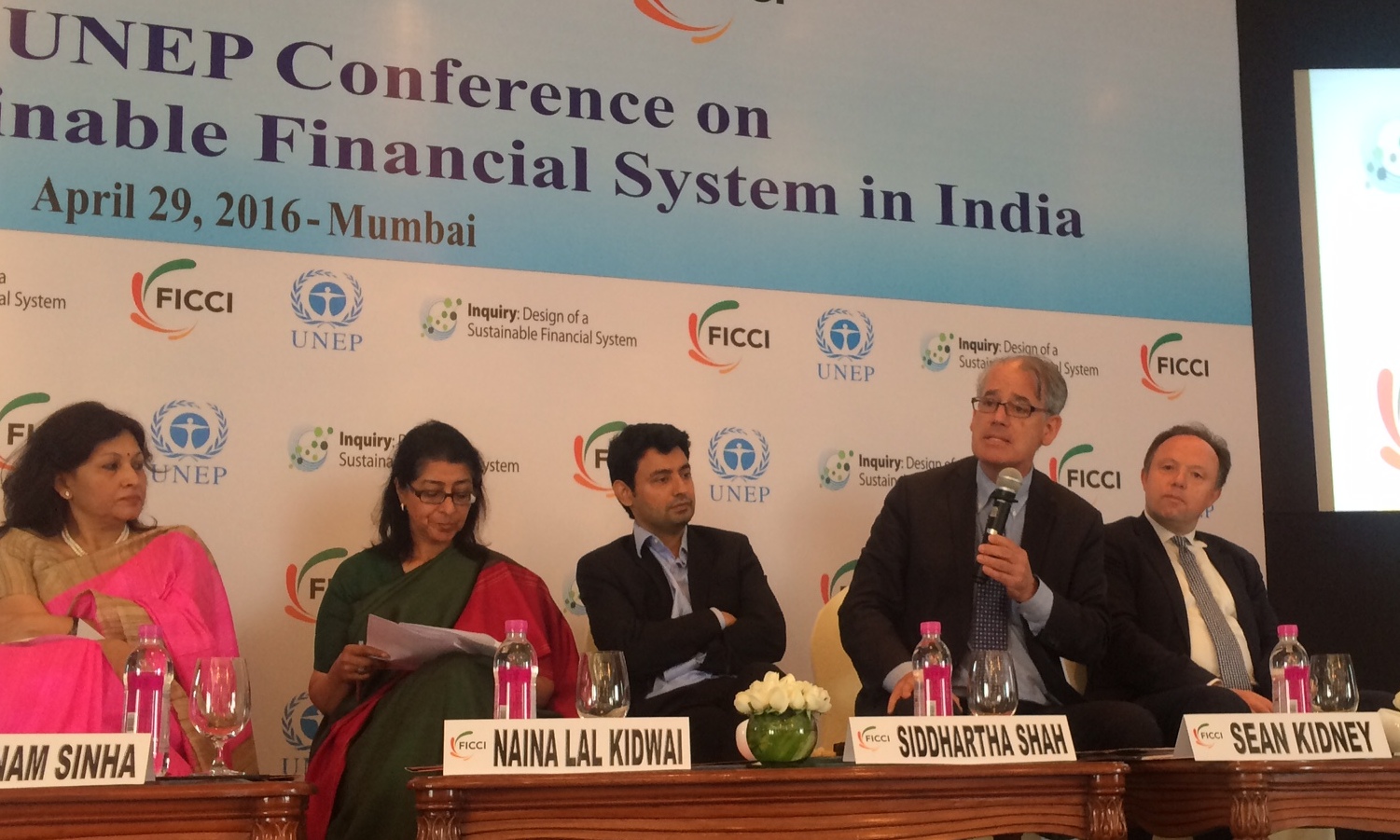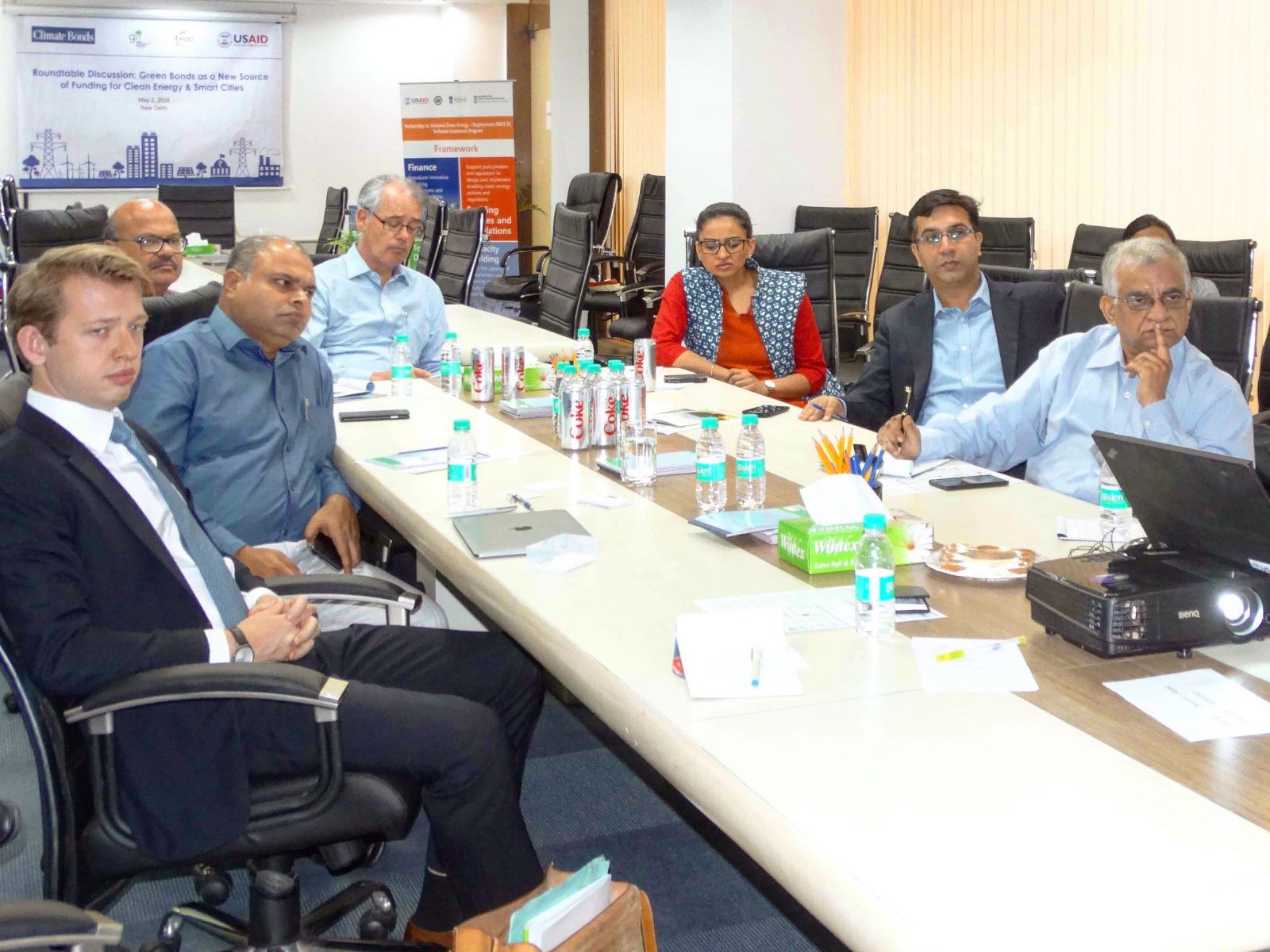The Climate Bonds team has returned from a round of meetings in Mumbai and Delhi with project developers, regulators, and financial institutions.
High on the agenda: Funding India’s sustainability goals; Potential of the Green Infrastructure Investment Coalition; How to meet the challenge of 175 GW of renewables by 2022; Building 100 Smart Cities and a doubling in energy demand by 2030.
The Potential Pipeline
Following 10 days of high-level meetings in Mumbai & Delhi it’s clear that momentum behind green finance in India is rapidly growing and the size of the potential deal-flow is staggering.
Tucked away in modest offices on the outskirts of Delhi is the government owned Energy Efficiency Services Limited (EESL); it provides an example of this scale. EESL is rolling out the world’s largest LED program with a target to replace 770 million incandescent lightbulbs in the next three years. This will avoid 20 GW of required generation capacity (equivalent to around 20 standard size coal power plants) at a cost of only USD 1.2 bn; roughly ten times cheaper than building the generation capacity.
EESL has similarly massive programs around street lighting, energy efficient appliances, cooling fans and rural water pumps.
Energy Infrastructure Plans
We also met with the CFO of IDBI, one of India’s largest banks, who outlined their pipeline of initiatives on a similar scale; aiming to make a large impact on India’s energy infrastructure.
The bank is working with State Governments on plans to replace India’s hundreds of thousands of inefficient diesel-powered irrigation pumps with efficient solar-powered models, and use solar to extend irrigation into new areas.
Farmers will even be able to earn money from their solar panels by feeding energy back into the grid when they’re not pumping water. These efforts will make a real difference to regions where dozens of farmers have been committing suicide because they can’t make ends meet.
IDBI are also working on financing the electrification of public and private transport across the country, investing in roof-top solar systems and setting up a national network of waste-to-energy plants.
Another of their projects aims to convert or replace Mumbai’s slums (which house 60% of the cities population) with energy efficient, affordable housing. This decades long programme will be one of the largest urban construction projects in the country.
Indian Companies and regulators very bullish on green targets
There are dozens of such stories in India now, where the financial sector is seeing a flurry of activity designed to meet the government’s massive targets for renewable energy, rail transport, water infrastructure and urban development.
In meetings with executives from other leading Indian financing institutions and companies (including ICICI, State Bank of India, HDFC, IDFC, Axis Bank, Yes Bank, Hitachi Rail, IREDA, L&T and Hero Energy), India’s green infrastructure potential was obvious.
Regardless of whether the national renewable target stays at 175 GW, is raised to 500GW or lands somewhere in between, it remains a significant investment opportunity compared to current total wind and solar capacity at 33.5 GW.
What is becoming obvious is that foreign capital will be required, as the scale of investment is already beginning to reach the sector capital limits for some Indian banks.
Role of international investors
Given these caps, Indian project developers and financing institutions are looking for new sources of capital to fund the country’s low-carbon ambitions. To this end, a number of instruments are available, from green bonds to private equity.
However there remain several key barriers to address. These include the level of familiarity with the Indian market by Western investors, the perceived risk profile of the country, foreign currency exchange risk, political risk and investor hesitancy.
Risk Bridging is Nothing New
None of these barriers are insurmountable. Many of them have known solutions, e.g. guarantees by governments and multilateral development banks (MDBs), cornerstone investments by these institutions, mezzanine finance, long-term currency swaps provided by import / export credit agencies etc.
GIIC India Forum - London
To understand the current barriers to investment and also to investigate possible solutions, the Green Infrastructure Investment Coalition India Forum is being convened on 30th June 2016 at the London Stock Exchange.
The Coalition is jointly organized by the Climate Bonds Initiative, the Principles for Responsible Investment, the UNEP Inquiry in the Design of a Sustainable Financial System, the International Cooperative Mutual Insurers Federation and the Long term Infrastructure Investors Association.
The 30th June event will bring together institutional investors, MDBs with project developers and funding institutions from India to facilitate green deal flow in the country.
Webinar on China and India - 13th May
If you want a direct report from Climate Bonds with additional insights from our trip to India, register here for our ‘Green Bonds Update from China & India’ webinar on Friday the 13th of May at 1pm BST.
Disclaimer: The information contained in this communication does not constitute investment advice and the Climate Bonds Initiative is not an investment adviser. Links to external websites are for information purposes only. The Climate Bonds Initiative accepts no responsibility for content on external websites.
The Climate Bonds Initiative is not advising on the merits or otherwise of any investment. A decision to invest in anything is solely yours. The Climate Bonds Initiative accepts no liability of any kind for investments that any individual or organisation makes, nor for investments made by third parties on behalf of an individual or organisation.



